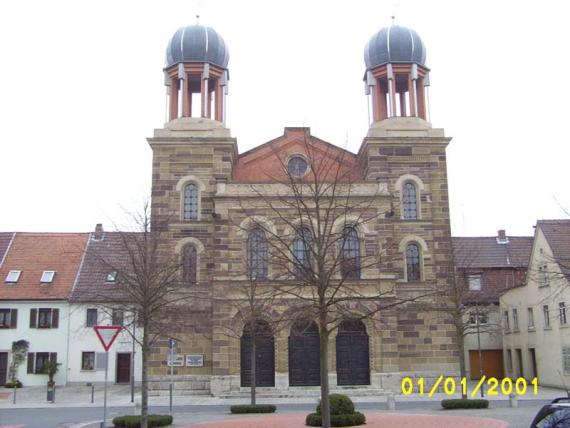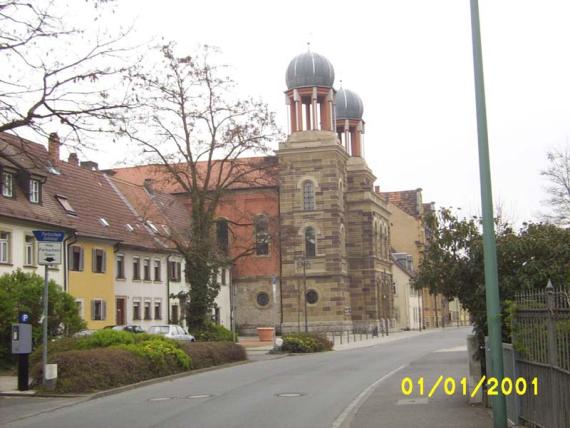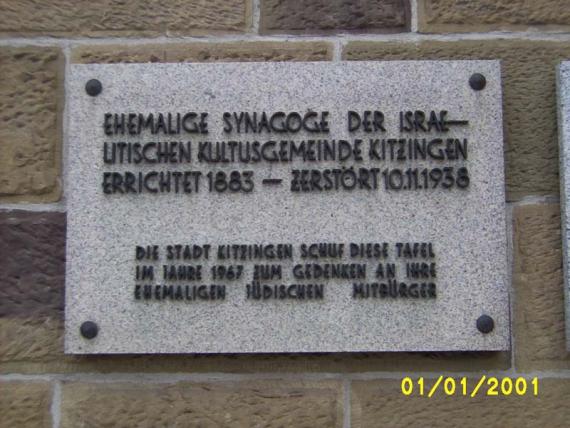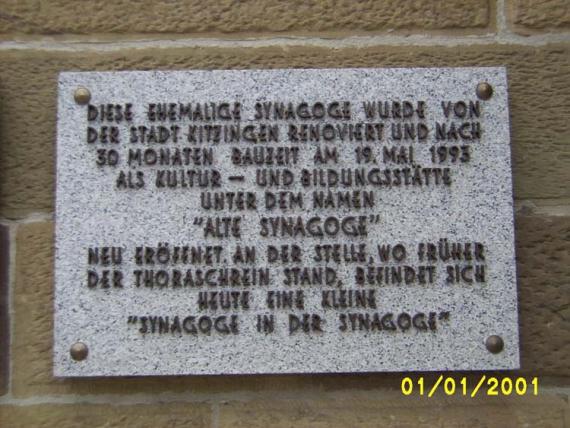Landwehrstraße 1
97318 Kitzingen
Germany
Since the mid-1870s, the Jewish community had been collecting funds for the construction of a new synagogue. Head Hirsch Stern established a synagogue building fund. In 1879, the assets of the fund already consisted of 3,550 marks, raised through donations. In 1881 the plans became concrete. At a congregational meeting in 1881, various proposals for the acquisition of a suitable site for the synagogue were discussed. Four properties were shortlisted: the Hotel zum R0ß, the Latin School, a building site on the southern Glacis and the Hofmann'sche Scheuer with the Pfund'schen Haus in Schrannenstraße. The latter was determined to be suitable. On November 27, 1881, the two properties were purchased for a total of 20,000 Mk. On December 25, 1881, a building committee was appointed. Plans for the new synagogue were drawn by construction engineer Schneider from Kitzingen. He had previously visited synagogues in Frankfurt, Mannheim, Karlsruhe and other cities with the members of the building committee. The execution of the construction took over master builder Korbacher.
The ceremonial laying of the foundation stone of the new synagogue took place on July 31, 1882. At the end of August 1883, the construction was completed. In the summer of 1908, the Kitzingen synagogue was extensively renovated and rededicated.
A detailed description of the events during the November pogrom can be found in Ophir, Baruch Z. u. Wiesemann, Falk: Die jüdischen Gemeinden in Bayern 1918-1945. Geschichte und Zerstörung, 1979, pp. 330-335.
The synagogue, which was only partially burned out, was renovated and, after a false ceiling was inserted, was misused as a camp for forced laborers (prisoners of war) during World War II. After 1945 it was used as a factory by several companies. In connection with the restitution proceedings, the building came into the possession of the city in 1953, but was used by the factories until 1974.
In February/March 1949, a trial of 27 of those involved in the November 1938 pogrom in Kitzingen took place before the Würzburg Regional Court. 22 defendants were sentenced to prison terms ranging from four months to three years and two months, and the remaining five were acquitted.
In 1967, a first memorial plaque was placed on the synagogue building. In 1976, the Kitzingen City Council decided that the building was not worth preserving and should be demolished. Parking lots close to the city center were to be created on the property. After this city council decision, resistance arose in the city. A cultural advisory board was founded by freelance artists, who worked out considerations and plans for a future use. Finally, a support association for the restoration of the former synagogue was founded. In 1989 the restoration and reconstruction of the former synagogue was decided in the city council (with still three votes against).
On May 19, 1993, the synagogue building, which had been restored in 30 months of construction, was rededicated as part of a program of visits by former Kitzingen Jews. Since then, the building has been used for cultural purposes. On the first floor, a "synagogue within the synagogue" is located where the Torah shrine once stood. May 2018 marked 25 years since the former Kitzingen synagogue reopened as a center for education and culture.



